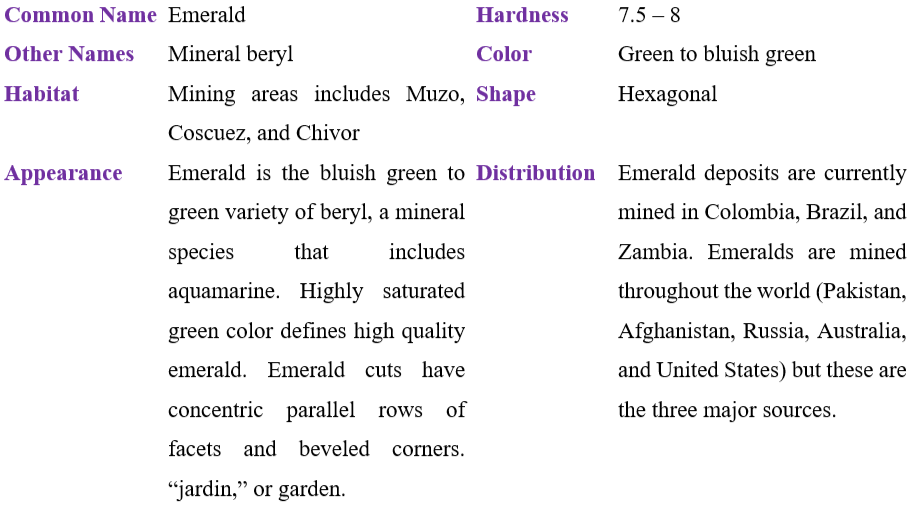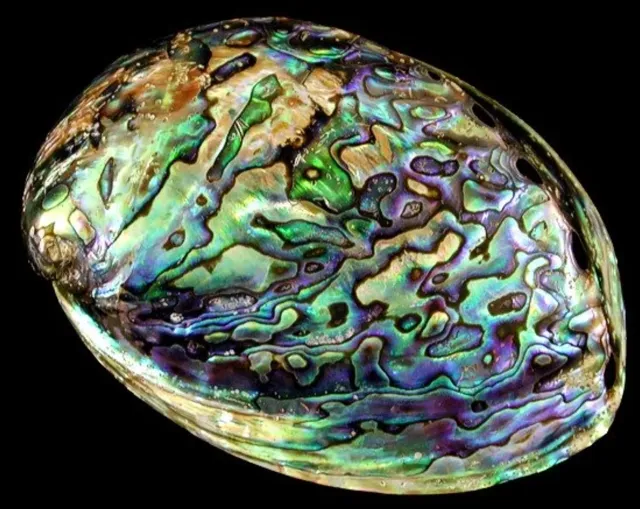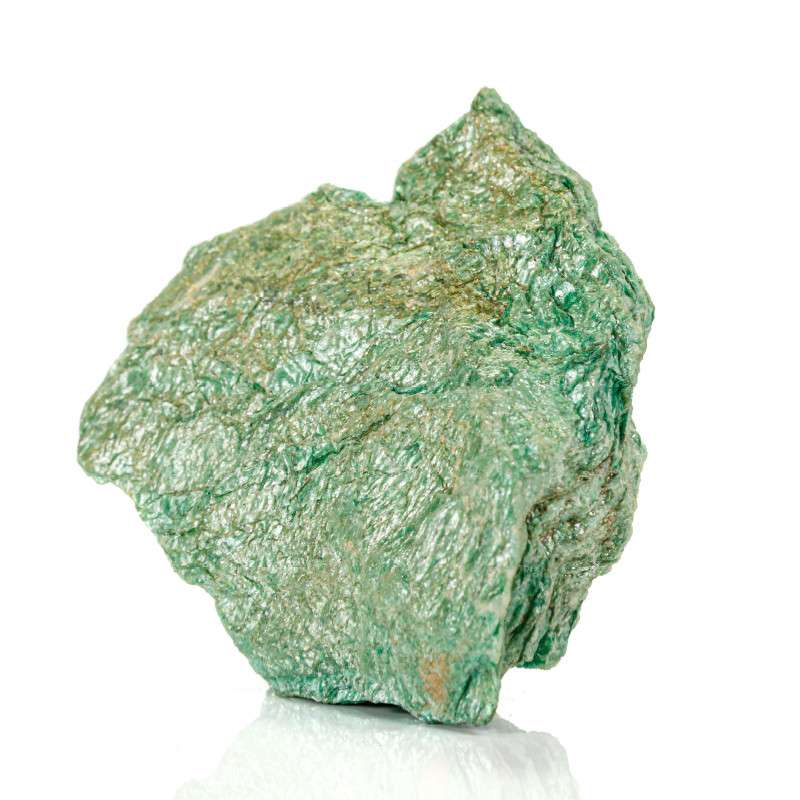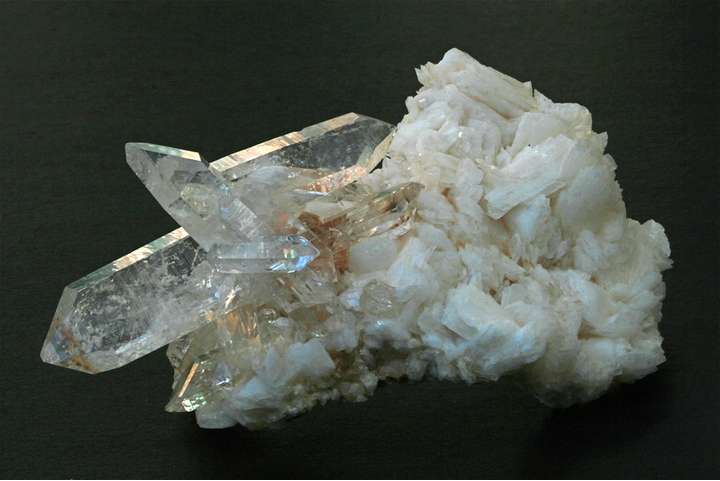
Appearance
The intense green color of emeralds, which can vary from a light, nearly translucent green to a deep forest green, is what makes them most famous. Traces of iron, vanadium, and chromium in the crystal structure are what give it its color. Emeralds may contain inclusions or imperfections in the stone, just like other gemstones. These inclusions can differ in size and form, and they can either be noticed with the naked eye or need to be magnified. An emerald’s appearance and value can be influenced by the way it is cut. The emerald cut, which is a rectangular form with truncated corners, is the most popular cut for emeralds. Oval, pear, and round cuts are also very common.
Geographical Distribution
Although emeralds can be found all over the world, Colombia, Zambia, Brazil, Madagascar, and Afghanistan are the main sources.
History
The earliest recorded emerald mines date at least from 330 BC to the 1700s and were located in Egypt. Emerald was a favorite stone of Cleopatra’s and she wore it in her royal jewelry. Spanish explorers plundering the New World in the sixteenth century included emeralds from what is now Colombia.
Metaphysical Properties
The stone emerald is a stone of life affirmation. It calms the emotions and opens the heart chakra. It offers patience, knowledge, inspiration, and equilibrium. It is said that by enabling the wearer to give and receive unconditional love, it will promote friendship, serenity, harmony, and domestic bliss.
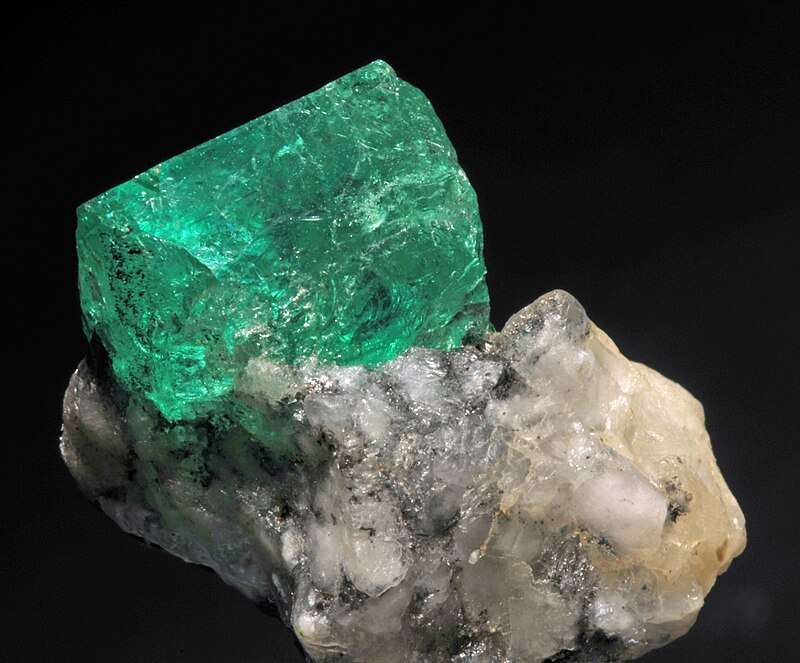
Chemical Composition
The mineral beryl, which has the chemical formula Be3Al2(SiO3)6, is the source of emeralds. Emeralds share a chemical makeup with other types of beryl, but they also include trace amounts of iron, vanadium, and chromium, which give the stones their distinctive green color.
Types
Classic Emerald Stone
For this valuable gemstone, the traditional emerald serves as the standard. These emeralds have the distinctive green color that makes emeralds famous. The color, clarity, and size of the classic emerald are the main components that add to its appeal.
Trapiche Emeralds
A special and uncommon form of emeralds known as trapiche emeralds have a characteristic radial pattern that resembles a wheel or a starburst. The emerald’s formation’s structural imperfections and mineral impurities are the cause of its remarkable property. Because of their distinctive and alluring beauty, trapiche emeralds are prized by collectors and are frequently found in Colombia.
Cat’s Eye Emerald gemstone
Cat’s eye emeralds, sometimes referred to as “chrysoberyl emeralds,” have a phenomenon called chatoyancy that, when exposed to light, causes a thin, bright line to form on the gemstone’s surface. The term comes from the fact that this line resembles a cat’s eye slit. The emerald’s small parallel inclusions produce the chatoyant look. Cat’s eye emeralds are renowned for having a captivating and lively look.
Muzo Emeralds
Muzo emeralds are well known around the world for their brilliant green hue and exceptional clarity. These emeralds can be discovered in Colombia’s Muzo mines, which have a long history of yielding some of the most highly prized emeralds worldwide. The Muzo emeralds are prized for their exceptional quality and are frequently linked to the purest and most intense shade of green.
Colombian Emerald Stone
Colombian emeralds are highly valued for their color and purity, and the country is one of the most well-known emerald-producing regions in the world. This region’s emeralds are known for their rich, deep green colors and are frequently used as a standard for evaluating all other emeralds.
Zambian Emerald Gemstone
An important additional source of excellent emeralds is Zambia. The vibrant green to slightly bluish-green hue of Zambian emeralds is highly prized. They are a favorite among emerald enthusiasts since they are usually more included than Colombian emeralds, yet their color can be just as brilliant.
Uses
For thousands of years, emeralds have been valued for their beauty and uniqueness and have been employed for a wide range of tasks, such as:
- Jewelry: The most popular applications for emeralds are in jewelry, such as rings, bracelets, earrings, and necklaces. For extra brilliance, they can be matched with diamonds or other gemstones and are frequently set in gold or platinum.
- Collecting: Due to their high value, emeralds are present in several private and public collections as well as museums worldwide.
- Investment: Emeralds have a tendency to appreciate in value over time, making them, like other rare gemstones, a wise investment.
- Industrial applications: Because of their special optical and electrical qualities, emeralds are occasionally utilized in industrial applications like electronics and lasers.
Table
